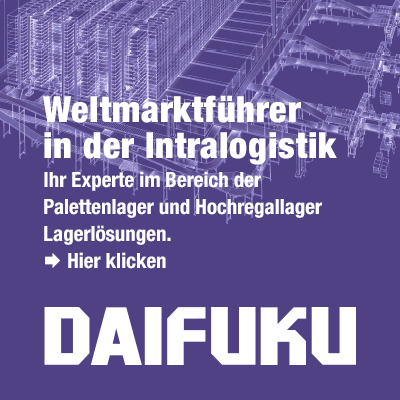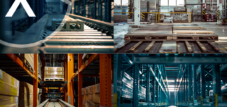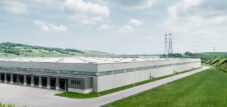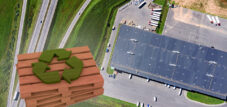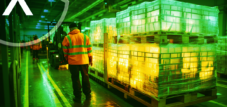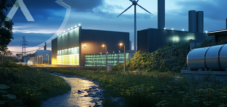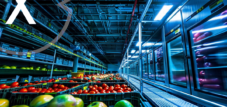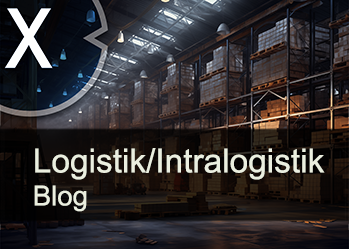The dark sides of the logistics boom: residents' protests, fire danger and the green conscience of high -beam bearings
Xpert pre-release
Language selection 📢
Published on: February 7, 2025 / update from: February 7, 2025 - Author: Konrad Wolfenstein

The dark sides of the logistics boom: residents' protests, fire danger and the green conscience of high -beam bearings - creative image: xpert.digital
Local resident vs. Logistik: Why high -bay warehouse often encounter resistance - and how we can change that
The challenges and opportunities of high -bay bearings: security, environment and acceptance
The increasing spread of high -bay bearings and pallet storage offers undeniable logistical advantages, but also brings considerable challenges. These range from social resistance and environmental concerns to fire risks and security requirements. In this comprehensive contribution, we examine the central problem areas, innovative security measures and sustainable solutions that will determine the future of warehouse logistics.
Social resistance and environmental aspects
Protests against high -bay warehouse: room conflicts and quality of life
The construction of high -bay bearings often leads to protests by residents, especially if the construction is associated with negative effects on the quality of living. In many cases, citizens feel impaired by shadow, increased heat development or a change in the landscape.
A current example is the resistance to a planned corrugated cardboard plant in Leverkusen. Residents fear not only a deterioration in the quality of life, but also a potential increase in noise and additional traffic. Similar protests are shown in Neuenstein, where a citizens' initiative was founded against the construction of a high-bay warehouse that is rejected due to noise and land use conflicts.
These cases illustrate the need to communicate early with the affected communities, to establish transparent planning processes and to create acceptance through environmentally friendly concepts.
Fire risks and security deficits
Danger from lithium batteries and pallet fires
High-bay warehouses contain considerable fire risks, especially through the storage of lithium-ion batteries and combustible pallet structures. The following incidents underline the urgency of preventive measures:
- Isseroda: In a photovoltaic company, three fires broke out within a short time that caused damage of over 730,000 euros. Studies showed that lithium-ion batteries ignited due to storage defects without external influence.
- Wages: A major fire was only prevented by quickly intervening the fire brigade after burning pallets attacked an adjacent hall.
- Minden: The complete burn -out of a pallet company underlines the high flame resistance of such storage structures.
Secondary risks: toxic flue gas and river acid formation
In addition to the direct fire risk, there are considerable risks from toxic reaction products. Deleting water contact with lithium batteries can release river acid that is highly toxic to humans and the environment. Likewise, flue gas loads can lead to health damage and make extensive evacuations necessary.
Suitable for:
Innovative security measures
Oxygen reduction for avoidance of fire
A promising approach to fire prevention is the oxygen reduction in high -base bearings. The oxygen content is reduced to 15 % by nitrogen -based inertization systems, which drastically reduces the flammability. This approach is already successfully used in frozen bearings, but requires dense building structures.
Innovative pilot projects, such as that in Friedrichsgabkoog, combine hydrogen -powered fuel cells for nitrogen production with emission -free power extraction. This creates a sustainable solution that also improves fire protection and energy efficiency.
Updated guidelines and standards
The revised VDI 3564 sets new security standards for high -bay warehouse and demands:
- Automatic extinguishing systems with spray or foam technology
- Structural measures such as fire -resistant partitions
- Close cooperation with authorities to develop individual fire protection concepts
Suitable for:
Sustainability in high-bay warehouse planning
Environmentally friendly building materials and constructions
A central element of sustainable high -bay warehouse is the use of environmentally friendly building materials. An outstanding example is the Weleda high-bay warehouse, which was built in a wood-clay construction. By using PEFC/FSC-certified wood from a radius of 60 km, 2,400 tons of CO2 were saved.
Include further sustainable approaches:
- Circular economy: Already in the planning phase, the entire life cycle of a building is analyzed to optimize dismantling and material recycling.
Energy and resource efficiency
Modern high -bay warehouses rely on energy -efficient technologies:
- Automation systems with 3D robots reduce energy consumption by up to 40 % by optimized walking paths and 24/7 mode without lighting.
- Photovoltaic systems on roof areas, such as B. the 5,000 m² solar roof at HIK, cover up to 30 % of the electricity requirement. In addition, geothermal energy is used for heating and cooling regulation.
- Intelligent warehouse management systems (WMS) minimize excess stocks and shorten picking paths, which causes a CO2 reduction by 15-25 %.
Location planning and environmental compatibility
An environmentally friendly choice of location is taken into account:
- Traffic reduction: Due to integration into rail networks, up to 20,000 truck trips can be saved per year.
- Environmental impact assessments (RRP) analyze an effect on air quality, soil sealing and biodiversity. Studies show that 85 % of the projects are approved by compensation measures such as green roofs.
Risk management and security concepts
Fire protection strategies
Modern high -bay warehouses rely on redundant security concepts, including:
- Spray drying and foam systems for immediate fire fighting
- Fire sections every 1,200 m² according to VDI 3564 to curb fire
Hazardous substance storage
Chemicals and inflammatory substances are stored separately according to UN GHS classes. Special protection precautions such as collecting tanks for 110 % of the lagervolumen prevent the leakage of hazardous substances.
The future of high -bay bearings
The increasing demand for storage capacities makes it necessary to make high -bay warehouse safer, more sustainable and socially accepted. This can be done by a combination of:
- Preventive security standards (e.g. nitrogen interiorization)
- Transparent communication with residents
- Sustainable technologies (e.g. photovoltaics, timber construction) can be achieved.
With these measures, the CO2 balance sheet can improve new high-bay warehouse by up to 50 % and the area efficiency can be increased to 3,000 pallet spaces per hectare. At the same time, the early involvement of residents and authorities remains essential to avoid conflicts of use and to ensure social acceptance.
Xpert partner in warehouse planning and construction
Highly bay warehouse: Between efficiency and challenges - background analysis
Maximum efficiency or risky strategy? The truth about pallet and high-bay warehouses
The increasing spread of high -bay bearings and pallet storage, which appears unstoppable in view of the steadily growing global trade and the increasing demands on efficient logistics, is a double -edged sword. On the one hand, they offer undeniable logistical advantages: they enable maximum use of the available area, accelerate warehouse processes and optimize the availability. On the other hand, they are associated with considerable challenges that go far beyond the purely business aspects and have profound effects on society, the environment and security.
The headlines of recent times make it clear that the acceptance of these warehouse structures is not always available in the population. Protests from residents, environmental concerns and the fire risks that are not to be underestimated, which require increased security measures, are just a few of the facets of this complex problem. It is therefore essential to take a holistic view that not only puts the economic advantages in the foreground, but also takes into account the potential negative consequences and is looking for ways to minimize or even avoid it completely.
Protests and social conflicts: When logistics meet resistance
The increasing compression of residential areas and the resulting shortage of space inevitably lead to conflicts in the planning and establishment of new logistics centers. High -bay warehouse, which often claim a significant area and shape the landscape, are a particularly sensitive topic. Environmental concerns that relate to noise pollution, air pollution, traffic volume and the loss of green areas are common triggers for protests and citizens' initiatives.
An example of this is the situation in Leverkusen, where residents mobilize against the construction of a planned corrugated cardboard plant. Their fears are diverse: they see a deterioration in the quality of life due to the darkening of their houses, increased heat development in the summer months and an increase in truck traffic. These fears are understandable, since high -bay warehouse can influence the microclimate in their area due to their height and expansion. The reflection of sunlight on the warehouse walls can lead to glare effects, while sealing surfaces affects natural cooling due to evaporation.
Similar conflicts can also be observed in other places. In Neuenstein, a citizens' initiative is involved against the construction of a high -bay warehouse that she sees as a burden on the community. Here, above all, the focus is on noise and land use disputes. The residents fear that the operation of the warehouse, in particular truck traffic, will lead to unreasonable noise pollution and that valuable agricultural areas are irretrievably lost.
These examples clearly show that the planning and construction of high -bay bearings may not be viewed in isolation from the needs and interests of the residents. Transparent communication, early involvement of the population in the planning process and the consideration of environmental and quality of life aspects are essential to create acceptance and avoid conflicts. It is important that those responsible not only emphasize the economic advantages of the project, but also openly address the potential negative effects and show specific measures to minimize these effects.
Fire risks and security deficits: a ticking time bomb?
In addition to the social conflicts, it is primarily the fire risks that are associated with the storage of large quantities of goods in a confined space that give cause for concern. In particular, the increase in storage of lithium batteries that are used in electric vehicles, solar systems and many other applications has significantly increased the fire risk in recent years. Lithium batteries are known for their high energy density and their tendency to thermalize, an uncontrolled temperature rise that can lead to a fire.
The events of recent times speak a clear language:
- In Isseroda there was three fires in a photovoltaic company that caused damage of over 730,000 euros. The cause of the fires was lithium-ion batteries that inflamed without external influence, presumably due to storage defects.
- In Löhne, a major fire, which attacked a hall from burning pallets, was only prevented by the rapid intervention of the fire brigade.
- A pallet company burned down completely in Minden, which underlines the high flameility of such warehouse.
These examples make it clear that fires in high -bay bearings can not only cause considerable economic damage, but also pose a danger to people and the environment. The release of toxic substances by burning plastics and other materials can lead to considerable flue gas load. In addition, the extinguishing water, which is often used in large quantities, can be contaminated with pollutants and lead to a load on the water and the soil. In the case of lithium battery fires, toxic river acid can also arise, which is a special danger to the emergency services.
In order to minimize these risks, extensive fire protection measures are essential. This includes structural measures such as fire sections and fire -resistant materials as well as technical measures such as automatic extinguishing systems and smoke detectors. In addition, careful storage of hazardous substances, especially lithium batteries, is of crucial importance. This includes compliance with safety distances, the use of suitable packaging and training the employees in dealing with these fabrics.
Innovative security measures: oxygen reduction as a prevention strategy
A particularly innovative and promising method of avoiding fire is oxygen reduction. In this process, the oxygen content in the warehouse is reduced to a level by supplying nitrogen, which significantly reduces the flammability of materials. With an oxygen content of around 15 %, many flammable fabrics can no longer be ignited.
This technology is already used in freezer, where it not only improves fire protection, but also increases energy efficiency. However, the oxygen reduction requires a dense building structure to minimize nitrogen loss and maintain the desired oxygen content.
A promising pilot project in Friedrichsgabkoog relies on hydrogen -powered fuel cells for nitrogen production. This technology offers the advantage that it provides electricity at the same time and works emission -free. The nitrogen generated can then be used for oxygen reduction in the warehouse, which creates a double benefit: improved fire security and a reduction in environmental pollution.
Updated guidelines: VDI 3564 as a guide for fire protection
In order to meet the increased demands on fire protection in high -bay bearings, the VDI 3564 was revised. This guideline requires risk -based fire protection concepts that combine structural, technical and organizational measures. These include automatic extinguishing systems, smoke detectors, fire sections, sprinkler systems and close cooperation with the authorities.
The VDI 3564 emphasizes that fire protection in high -bay bearings must not only be limited to fire fighting, but also must include fire avoidance and the damage limitation. This requires a comprehensive risk analysis in which all potential causes of fire and the possible effects of a fire are taken into account. On this basis, the suitable fire protection measures can then be selected and implemented.
Necessity of compensation: sustainability as a key to acceptance
The examples of recent times show that the expansion of storage capacities can only succeed if preventive security standards are observed, transparent communication with the residents is maintained and sustainable technologies are used. The nitrogen interiorization is only an example of a technology that increases security and reduces environmental pollution.
At the same time, location planning must take environmental and quality of life more into account in order to avoid further conflicts. This means that when choosing a location for a high -bay warehouse, not only the logistical advantages, but also the potential effects on the environment and the residents must be taken into account. An early integration of the population into the planning process, the implementation of environmental impact assessments and the consideration of compensation measures can help to avoid conflicts and to increase the acceptance of the project.
Environmental concerns in planning high -bay bearings: a holistic strategy for more sustainability
The planning and construction of high -bay bearings is a complex process that takes into account a variety of aspects. In addition to the logistical and economic factors, environmental concerns also play an increasingly important role. In order to take these concerns into account, a holistic strategy is required that combines structural, technological and procedural measures.
Suitable for:
- Green intralogistics – for a sustainable supply chain
- Green cold chain: Strategies for more environmentally friendly refrigeration and deep-freeze storage in global logistics and industry
Sustainable building materials and construction: wood and regional resources as an alternative to concrete and steel
One way to reduce environmental pollution from the construction of high -bay bearings is the use of sustainable building materials. Wood is a renewable raw material that stores CO2 and thus makes a positive contribution to climate protection. Projects such as the WELEDA high-bay warehouse in a wood-clay construction show that wood can also be an attractive alternative to concrete and steel in the industrial building.
The Weleda high-bay warehouse, which has a base area of 7,600 m², was built with PEFC/FSC-certified wood from a radius of 60 km. The use of wood could save around 2,400 tons of CO2. This shows that the use of wood in the industrial building can make a significant contribution to climate protection.
In addition to wood, other regional resources such as clay, straw or natural stones can also be used to reduce environmental pollution from the construction of high -bay bearings. The use of regional resources has the advantage that the transport routes are short and the CO2 emissions are reduced.
Another important aspect is the circular economy. Already in the planning phase, life cycle analyzes should be carried out in order to look at the entire life cycle of the building and to identify opportunities for material recycling. This can help to reduce resource consumption and avoid waste.
Energy and resource efficiency: automation, renewable energies and process optimization
In addition to the use of sustainable building materials, energy and resource efficiency is also of crucial importance. Here are a variety of technological and procedural solutions:
automation
Fully automatic systems with 3D robots can reduce energy consumption by up to 40 %. This is due to the fact that automated systems have optimized walking paths and can work in 24/7 mode without lighting.
Renewable energy
Photovoltaic systems on roof areas can cover a significant part of the electricity requirement. For example, the 5,000 m² photovoltaic systems on the roof of the HiK high-bay warehouse cover up to 30 % of the electricity requirement. In addition, geothermal systems can be used for heating and cooling.
Warehouse management systems (WMS)
WMS minimize excess stocks and shorten picking paths through real -time data. This can lead to a reduction in CO2 emissions by 15-25 %.
Inertization technologies
Nitrogen-based fire protection systems reduce the oxygen content to 15 %, which reduces fire risks in lithium batteries by 90 %.
Location planning and environmental impact assessment (RRP): Integration in railways and consideration of environmental aspects
The location planning plays a crucial role in minimizing environmental pollution from high -bay warehouse. A good connection to the transport network, in particular on the rails, can significantly reduce truck traffic and the associated emissions. For example, the integration of the Feldschlösschen-Hochsebel bearing into the rail network with its own loading system lowers the truck trips by 20,000 per year.
In addition, an environmental impact assessment (RRP) is essential in order to analyze and evaluate the potential effects of the project on the environment. As part of the RRP, the effects on various protective goods such as air, climate, soil, water and biodiversity are examined.
Various test parameters are taken into account at the RRP for high -bay warehouse. Fine dust emissions and cold air flows play a role in the air/climate protective goods. For soil/water, fire water retention and sealing count. In the area of biodiversity, area consumption and light emissions are considered.
The results of the RRP can help optimize the planning of the project and minimize the environmental impact. In many cases, compensation measures such as green roofs or the creation of compensation areas are required in order to obtain approval for the project. Examples show that 85 % of the projects are approved by compensation measures.
Risk management and security: redundant extinguishing systems and hazardous substance storage
Comprehensive risk management is essential to ensure the security of high -bay bearings. This applies in particular to fire protection and hazardous substance storage.
Modern high -bay warehouses implement redundant extinguishing systems (spray drying quenchers + foam systems) and fire sections every 1,200 m² according to VDI 3564. This ensures that a fire can be fought quickly and effectively.
In the case of hazardous substance storage, the separation of chemicals according to UN GHS classes in isolated areas with collecting tanks for 110 % of the lagervolume is of crucial importance. This prevents dangerous substances from escaping in the event of an accident and burdening the environment.
A sustainable future for high -bay warehouse
By implementing the measures mentioned, it is possible to improve the CO2 balance sheet by new warehouses by up to 50 % compared to conventional buildings, while increasing the area efficiency to 3,000 pallet parking spaces per hectare. The early involvement of residents and authorities remains crucial to prevent usage conflicts. This is the only way to ensure a sustainable future for high -bay warehouse, which meets both the economic and the ecological and social requirements. The acceptance of these storage structures in the population will significantly depend on whether it is possible to minimize the potential negative effects and to communicate the advantages for society transparently. It is the responsibility of everyone involved to take this path and to make a sustainable future for logistics.
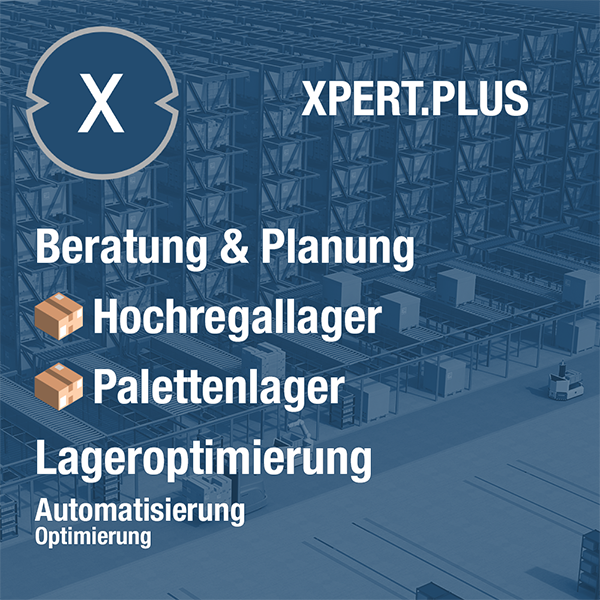
Xpert.Plus warehouse optimization - high-bay warehouses such as pallet warehouses consulting and planning
We are there for you - advice - planning - implementation - project management
☑️ SME support in strategy, consulting, planning and implementation
☑️ Creation or realignment of the digital strategy and digitalization
☑️ Expansion and optimization of international sales processes
☑️ Global & Digital B2B trading platforms
☑️ Pioneer Business Development
I would be happy to serve as your personal advisor.
You can contact me by filling out the contact form below or simply call me on +49 89 89 674 804 (Munich) .
I'm looking forward to our joint project.
Xpert.Digital - Konrad Wolfenstein
Xpert.Digital is a hub for industry with a focus on digitalization, mechanical engineering, logistics/intralogistics and photovoltaics.
With our 360° business development solution, we support well-known companies from new business to after sales.
Market intelligence, smarketing, marketing automation, content development, PR, mail campaigns, personalized social media and lead nurturing are part of our digital tools.
You can find out more at: www.xpert.digital - www.xpert.solar - www.xpert.plus




